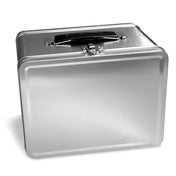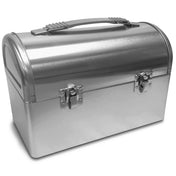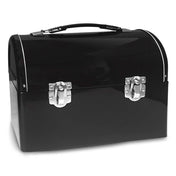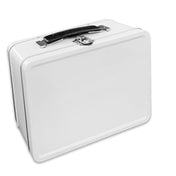Does your child's lunch box pass the health test? Chances are, probably not.
What you choose to put into a school lunch box plays a big role in the ideas your child develops around eating. But according to some experts, too many of us are getting the lunch box wrong.
Accredited practicing dietitian Lisa Renn, spokesperson for Dietitians Association of Australia and author of Diet Proof Your Kids, says studies show Australian children get too much – a whopping 41 per cent – of their daily kilo-joule intake from discretionary foods (often referred to as snack, treat or "sometimes" foods).
Renn believes school lunch boxes are partly to blame.
"It's very easy to throw packaged foods into the school bag, especially if parents are getting kids to prepare their own lunches," says Renn. "It's great to encourage independence and to involve kids in food preparation, but don't be tempted to rely on packets."
Schools can help encourage healthy choices too. Some great school-led initiatives include healthy canteens, kitchen garden programs and "nude food" policies – whereby families are discouraged from sending kids to school with packaged foods.
Brisbane-based nutritionist and dietitian Deb Blakley from Kids Dig Food says it's important to remember that when you pack a lunch box (or show your children how to prepare a meal) you are teaching your kids how to eat; what a healthy meal looks like. She says the most common mistake parents make when packing a lunch box is this: "A typical lunch box tends to include too much refined bread, crackers and biscuits and not enough vegetables, fresh fruit and protein."
Blakley shares some tips to help redress the balance:
Don't save the veggies for dinner
Parents often save vegetables for the evening meal rather than also incorporating them into breakfast, lunch and snacks. The problem here is that kids won't get close to their recommended daily serve of vegetables (see chart below). If the lunch box is a no-go zone for veggies for your kids, offer them at snack time – when kids are hungry you will be surprised what they'll eat.
Don't forget the protein
Protein and fat are really important for satiety (feeling satisfied). This is why low-fat diets are not great for kids says Blakley.
Choose wholegrain products
Choose bread and cereal products that are highest in fiber as these provide longer-lasting energy and make kids feel fuller for longer. Refined foods give kids a quick burst of energy but it doesn't last long.
Don't give up
Popping something new into a lunch box is a great way to give kids the opportunity to explore and try a new food. Research shows that gentle and consistent exposure to lots of different foods is the best way for kids to accept and enjoy a wide variety of foods.
Original article by Jane Holroyd appeared on Goodfood.
Photo by Pixel Shot / Adobe






